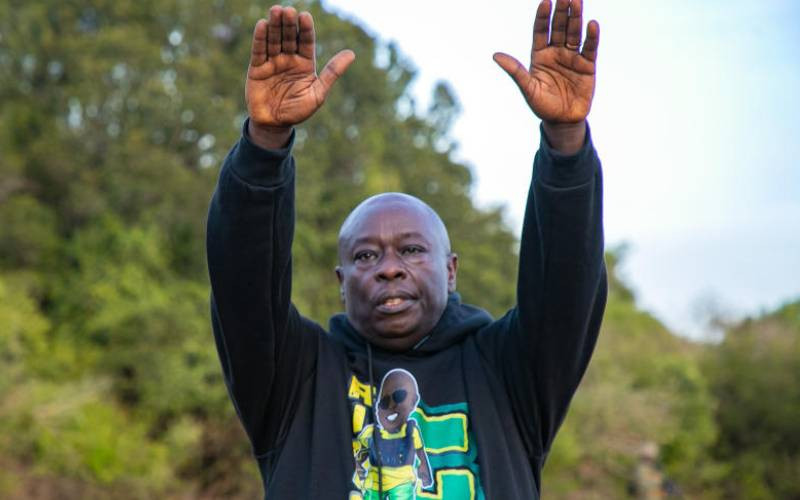“Never defecate where you eat” is one of the common proverbs among the Luos. It calls for a sustainable management of resources in the society. Kenya losses about 430 million liters of clean water annually through meter inaccuracies, theft, burst pipes, and leaks. According to the Japan International Cooperation Agency, the clean water wastage translates to a loss of about Sh. 12.2 billion. The revenue lost negatively affects the economic viability and sustainability of the water utilities and resources. Nairobi being the county with the most extensive water network system in Kenya, it can learn much from these statistics.
Water as a Scarce Resource
Rural-urban migration has grown to be the new normal thus straining the demand-supply balance on all of the scarce resources including water. According to Nature Conservancy analysis, about 1 million people in the urban areas will be relying on less than 100 liters of water per day before mid-century and this will include water used for laundry and showering.
The cause of water scarcity in these cities is not pegged on demand alone but also climate change. As Kenya struggles to increase its forest cover to 10 percent of its total land area, climate change has seen the reservoirs, rivers, and lakes dry. Furthermore, its cities and towns have proven to be poor in cooperating with each other when it comes to water management. Most of them have been driven by self-interest thus transferring huge quantities of water over long distances. For instance, Nairobi transfers huge quantities of water from Kiambu and Muranga Counties and this is not an isolated case on a global spectrum. According to Nature Conservancy, the 100 largest cities in the world get 43 percent of their water outside their basin through inter-basin transfer. It is only reasonable that the cities manage to conserve the watershed from which they withdraw their water lest the whole process becomes unsustainable.
Learning from Sao Paulo’s Mistake
In 2014, Sao Paulo experienced a great drought havoc that ripped the city apart and the effects are still being felt to date. This was caused by mismanagement of the hydrological cycle to which the city relied on. The main reservoirs that the city relied on could not hold drinking sufficient water for even two weeks. Consequently, health centers and schools were closed early, dishes were unwashed in sinks, and restaurants and hotels placed measures to ensure that the customers did not visit the restrooms. Power cuts became common in the city as it relied on the hydropower.
Brazil has the highest amount of fresh water in the world- 12 percent of the fresh water on Earth. So, if Sao Paulo, South America’s largest and richest city ran out of the water, what is Nairobi? The main causes of the problem included poor management and distribution, variability, and deforestation. All that the city needed to do was to take the revenue collected from the water resource and invest in the management and protection of the watersheds or drainage basins.
A Need for Action
Nairobi has a chance to avoid experiencing what Sao Paulo is witnessing through the management of the watershed which will entail the County distributing 25 to 40 percent of revenue collected from water usage to the Counties to which the watersheds lie. Even though a law exists that calls for the allocation of such revenues since water is a natural resource; this should be based on instincts and not politics. To ensure efficiency, the funds need to be channeled directly to the conservation of the drainage basins including forests, rivers, and other ecosystems. In return, there will be a restoration of waterways and reforestation that could be of financial benefit to the city. It is also important that the city invests on water management with the focus of minimizing leakages thus avoiding wastage of an already scarce resource.
The argument of the Kiambu and Muranga against Nairobi is not only supported by the law but also the concept of sustainability. However, there is a need to depoliticize through developing a system that will ensure that the revenues distributed to the counties will specifically be channeled to the conservation efforts. For instance, the funds should be used to minimize upstream agricultural pollution and enhance forest preservation and management.
Nairobi County needs to be a driver of stewardship so that the rest of the counties can emulate. It should redefine the landscape and enhance the development of the rural areas to which the watersheds lie. Furthermore, the water professionals need to adjust their water infrastructure definition to include the watersheds, entire river systems, and investments on the watersheds if sustainability is to be realized.
 The Standard Group Plc is a
multi-media organization with investments in media platforms spanning newspaper
print operations, television, radio broadcasting, digital and online services. The
Standard Group is recognized as a leading multi-media house in Kenya with a key
influence in matters of national and international interest.
The Standard Group Plc is a
multi-media organization with investments in media platforms spanning newspaper
print operations, television, radio broadcasting, digital and online services. The
Standard Group is recognized as a leading multi-media house in Kenya with a key
influence in matters of national and international interest.
 The Standard Group Plc is a
multi-media organization with investments in media platforms spanning newspaper
print operations, television, radio broadcasting, digital and online services. The
Standard Group is recognized as a leading multi-media house in Kenya with a key
influence in matters of national and international interest.
The Standard Group Plc is a
multi-media organization with investments in media platforms spanning newspaper
print operations, television, radio broadcasting, digital and online services. The
Standard Group is recognized as a leading multi-media house in Kenya with a key
influence in matters of national and international interest.








